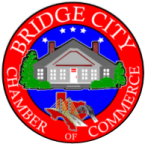
Bridging the Gap: Closing Achievement Disparities in Bridge City Schools
The East-West Divide: A Tale of Two Schools
I’ve always been fascinated by the dichotomy of my hometown, Bridge City. It’s a place where you can drive for just 12 minutes and go from an area where the average life expectancy is over 90 years old to one where it’s only 69. Talk about a tale of two cities! And nowhere is this divide more evident than in our public school system.
As I stroll down the tree-lined streets of East Bridge High, I’m struck by the stately mansions and well-manicured lawns. It’s a far cry from the grittier neighborhoods surrounding West Bridge High, where boarded-up storefronts and crumbling infrastructure tell a different story. But the disparities go beyond just the physical environment – they’re deeply rooted in the history and policies that have shaped this community.
Research shows that these types of achievement gaps often stem from systemic inequities, like redlining and segregation, that have persisted for generations. And Bridge City is no exception. The legacy of racial discrimination and economic disinvestment in the west side has left an indelible mark, with far-reaching consequences for the students who call those neighborhoods home.
Unequal Resources, Unequal Outcomes
When I look at the statistics, the disparity is staggering. At East Bridge High, less than 15% of students qualify for free or reduced-price lunch, compared to nearly 50% at West Bridge. And the gap in academic performance is equally stark – recent test scores showed 73% of East High students scoring proficient in reading, compared to just 44% at West Bridge.
It’s enough to make your head spin. How can two schools in the same district be so wildly different? Well, the answer lies in the unequal distribution of resources. You see, our school funding model is based on equality – each school gets the same amount per student. But when the starting point is so uneven, that approach only perpetuates the disparities.
Students at West Bridge often face greater challenges, like higher rates of poverty, trauma, and special education needs. They need more support, more individualized attention, more wraparound services. But the reality is, they’re not getting it. And the results speak for themselves – lower test scores, lower graduation rates, and far fewer opportunities to excel.
The Uphill Battle for Equity
It’s not for lack of trying, though. Over the years, there have been concerted efforts to address these inequities. Community advocates have pushed the school district to reallocate funding, directing more resources to the schools with the greatest need. And local principals like Tom Tusken at West Bridge have implemented innovative programs like “Check and Connect” to provide targeted support for struggling students.
But progress has been painfully slow. As Tusken puts it, “What is reported simply is a comparison to our counterpart across town. That counterpart is East High School.” And the community hasn’t exactly been receptive to efforts to level the playing field. When the district proposed redrawing school boundaries to better balance student demographics, parents at East High reacted with fury, worried about their children being sent to the “bad” school.
Research shows that addressing achievement gaps requires a multi-faceted approach, tackling the social, economic, and systemic factors that contribute to them. It’s not enough to simply throw more money at the problem – we need to fundamentally rethink the way we structure and resource our schools.
A Call for Collective Responsibility
And that’s where I think the real challenge lies. Because at the end of the day, this isn’t just about West Bridge High or East Bridge High – it’s about all of us. These are our kids, our future, and we all have a responsibility to ensure they have access to the opportunities they deserve.
I know it’s not easy. Changing long-held perceptions and breaking down deeply entrenched divides is hard work. But I also believe it’s the only way forward. As one parent, Lindsay Kern, put it, “It’s important to me and my husband that our kids experience racial and socioeconomic diversity at school.” And she’s right – diversity isn’t just a “nice-to-have,” it’s essential for preparing our young people to thrive in an increasingly interconnected world.
So let’s roll up our sleeves and get to work. Let’s have the tough conversations, challenge our own biases, and get creative in addressing these systemic issues. Because at the end of the day, the future of our community – and our country – depends on it. The Bridge City Chamber of Commerce is committed to being a part of the solution, and we hope you’ll join us.
After all, a rising tide lifts all boats. And when we work together to ensure that every child in Bridge City has access to a high-quality education, regardless of their zip code, that’s a tide that will create ripples of success for generations to come.


